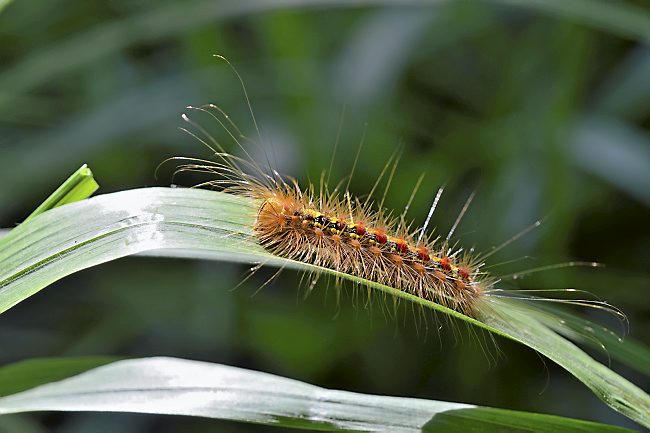Plans to spray for spongy moths in five Minnesota counties have been scrapped after the federal funding for the aerial treatments didn’t come through.
The Minnesota Department of Agriculture said it planned to spray more than 2,700 acres throughout St. Louis, Carlton, Itasca, Anoka and Winona counties this spring, striking in the short period in the invasive insect’s lifespan when the bacterial insecticide is effective against it.
The U.S. Department of Agriculture and the U.S. Forest Service’s Slow the Spread program funded such work for decades, reducing the moth’s spread by 60% and treating more than 1 million acres. But the state agency said it has not received the money it needs in time to carry out this spring’s aerial assault.
The agency planned to spray Bacillus thuringiensis var. kurstaki, or Btk, a naturally occurring soil bacteria that kills spongy moth caterpillars feeding on canopy foliage. Btk is nontoxic to people, bees, pets and other animals.
“Having to cancel Btk aerial management operations in these areas jeopardizes the future success of this program,” Minnesota Department of Agriculture Commissioner Thom Petersen said in a news release. “Spongy moth populations in these areas will likely increase and advance quicker into neighboring areas, making future years of management more complicated and costly.”
The USDA and Forest Service did not immediately respond to the Duluth News Tribune’s request for comment Tuesday evening.
The state agency said it still plans to aerially apply a mating disruption pheromone to stop the moths from reproducing on 112,000 acres across Minnesota and conduct its annual spongy moth population survey, but both those rely on federal funding, too.
“Overall, federal funding for these strategies is still uncertain; however, the MDA has been assured to receive initial funding for the spongy moth survey,” the agency said in a news release. “It is still unknown if federal funds to perform aerial mating disruption operations will be distributed in 2025.”
The agency said it may need to put temporary quarantines in place to prevent spongy moths hitchhiking on woody tree material from leaving the area.
Formerly called gypsy moths, the spongy moths are native to Europe and are considered a major problem for North American trees because they have few natural enemies here and can overwhelm patches of forest, defoliating trees quickly. They will munch on more than 300 species of trees and bushes, including aspen, birch and oak.
Spongy moths first came to the eastern U.S. from Europe in the 1860s, arriving by ship, and have been expanding ever since. They travel slowly on their own but have ridden west as egg clusters on cars, trucks, trains, trailers and campers. They have been in eastern Wisconsin since the 1970s and have now spread across the entire state and into eastern Minnesota.
The moth does its damage when it’s in its caterpillar stage. Forest health experts say the moths can’t be stopped. But their westward movement can be slowed, and outbreaks can be kept smaller, with annual aerial spraying efforts where the largest concentrations of moths are located.
Related Articles
Minnesota man with white nationalist ties convicted of gun charges, feds say
Minnesota won’t comply with Trump on DEI in schools, state officials say
Have a REAL ID? If not, prepare for travel delays, MAC says.
Letters: We won’t take attacks on Social Security lying down
Mega Millions tickets rise to $5, but the lottery promises more giant jackpots


Leave a Reply